Everything You Need to Know to Pass Algebra 1
Algebra 1 is a fundamental branch of mathematics that plays a crucial role as a foundation for more advanced mathematical concepts. Whether you are a student preparing for an upcoming Algebra 1 exam or an individual seeking a comprehensive understanding of algebraic principles, this article aims to equip you with the necessary knowledge and strategies to excel in Algebra 1.
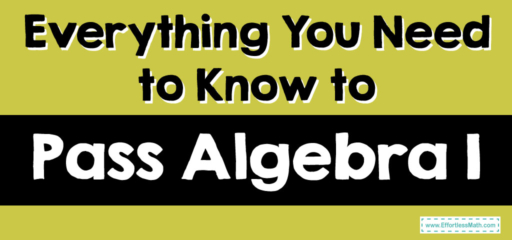
What is Algebra 1?
Algebra 1 is a branch of mathematics that focuses on symbols, variables, and their interconnected relationships. It encompasses various mathematical techniques, including solving equations, graphing functions, manipulating expressions, and analyzing patterns and relationships. Algebra 1 serves as a stepping stone to more advanced math courses like Algebra 2, Geometry, and Calculus.
Importance of Algebra 1
Algebra 1 holds immense importance in the realm of mathematics education. It provides a solid foundation for developing critical thinking and problem-solving skills, which are valuable assets in both academic and real-world scenarios. By studying Algebra 1, individuals gain the ability to understand and work with abstract concepts, make logical connections between different mathematical ideas, and apply algebraic skills to solve complex problems. Additionally, the principles of algebra find practical applications in numerous fields such as science, engineering, economics, and computer science.
By delving into the intricacies of Algebra 1, you will acquire the necessary tools to approach mathematical challenges with confidence and precision. Whether you are tackling equations, analyzing graphs, or exploring relationships between variables, a solid understanding of Algebra 1 will empower you to excel in your academic pursuits and beyond.
The Absolute Best Book to Ace Algebra I
Basic Concepts in Algebra 1
Real Numbers
Real numbers are a set of numbers that include rational numbers (fractions and integers) and irrational numbers (such as π and √2). Understanding real numbers is crucial in Algebra 1, as they form the foundation for all mathematical operations.
Variables and Expressions
Variables are symbols used to represent unknown quantities, while expressions are combinations of variables, constants, and mathematical operations. Learning to manipulate variables and expressions allows us to solve equations and evaluate mathematical statements.
Equations and Inequalities
Equations are mathematical statements that assert the equality of two expressions. Inequalities, on the other hand, represent relationships between expressions using symbols like < (less than), > (greater than), ≤ (less than or equal to), and ≥ (greater than or equal to).
Functions
Functions are mathematical relationships between input values (domain) and output values (range). They are often represented graphically and algebraically. Understanding functions helps analyze patterns, make predictions, and solve real-world problems.
Solving Linear Equations
Linear equations are equations with variables raised to the power of one. Solving linear equations involves isolating the variable on one side of the equation. There are various methods for solving linear equations, including:
One-Step Equations
One-step equations are solved by performing a single operation, such as addition, subtraction, multiplication, or division, to both sides of the equation.
Two-Step Equations
Two-step equations require two different operations to isolate the variable. The goal is to simplify the equation step by step until the variable is isolated.
Multi-Step Equations
Multi-step equations involve multiple operations, such as combining like terms, distributing, and applying inverse operations. The solution is found by simplifying the equation until the variable is isolated.
Equations with Variables on Both Sides
Equations with variables on both sides involve simplifying and rearranging the equation to get all the variables on one side and the constants on the other side.
Graphing Linear Equations
Graphing linear equations provides a visual representation of the relationship between variables. It helps analyze patterns, determine the slope and intercepts, and identify solutions to equations. Key concepts in graphing linear equations include:
Cartesian Coordinate System
The Cartesian coordinate system is a grid formed by two perpendicular lines, the x-axis and y-axis. Points on the grid are represented by ordered pairs (x, y) and allow us to graph equations and locate specific points.
Slope-Intercept Form
The slope-intercept form of a linear equation is y = mx + b, where m represents the slope of the line and b represents the y-intercept, the point where the line intersects the y-axis.
Point-Slope Form
The point-slope form of a linear equation is y – y₁ = m(x – x₁), where m is the slope of the line and (x₁, y₁) represents a point on the line.
Parallel and Perpendicular Lines
Parallel lines have the same slope and will never intersect. Perpendicular lines have slopes that are negative reciprocals of each other and intersect at a right angle.
A Perfect Practice Workbook for Algebra I
Systems of Equations
A system of equations involves multiple equations with the same variables. Solving systems of equations helps find the values of the variables that satisfy all the equations simultaneously. Common methods for solving systems of equations include:
Solving Systems of Equations by Graphing
Graphing the equations in a system helps determine the point(s) of intersection, which represents the solution(s) to the system.
Solving Systems of Equations by Substitution
Substitution involves solving one equation for one variable and substituting that expression into the other equation. This process helps find the values of the variables.
Solving Systems of Equations by Elimination
Elimination involves adding or subtracting the equations in a system to eliminate one variable. This process helps simplify the system and find the values of the variables.
Exponents and Polynomials
Exponents represent repeated multiplication, and polynomials are expressions with multiple terms. Understanding exponents and polynomials is crucial in various algebraic operations, including:
Laws of Exponents
The laws of exponents govern the rules for multiplying, dividing, and raising exponents to a power. They help simplify expressions and perform operations with exponents.
Operations with Polynomials
Operations with polynomials include adding, subtracting, multiplying, and dividing polynomials. These operations are essential in simplifying expressions and solving equations.
Factoring Polynomials
Factoring polynomials involves expressing them as a product of simpler polynomials. Factoring helps find solutions to equations, identify common factors, and simplify expressions.
Best Algebra Prep Resource
Quadratic Equations
Quadratic equations are second-degree equations that involve a variable raised to the power of two. Solving quadratic equations requires various methods, such as:
Solving Quadratic Equations by Factoring
Factoring quadratic equations involves expressing them as a product of binomials. By setting each factor equal to zero, the solutions to the equation can be found.
Quadratic Formula
The quadratic formula is a formula that gives the solutions to any quadratic equation. It is derived from completing the square and provides a general method for finding solutions.
Completing the Square
Completing the square involves manipulating a quadratic equation to create a perfect square trinomial. This process helps find the solutions to the equation.
Inequalities and Absolute Value
Inequalities represent relationships between expressions, and absolute value measures the distance between a number and zero. Solving inequalities and absolute value equations involves:
Solving Linear Inequalities
Linear inequalities are solved similarly to linear equations. However, when multiplying or dividing by a negative number, the inequality symbol must be flipped.
Solving Absolute Value Equations and Inequalities
Absolute value equations involve finding the values that satisfy the equation. Absolute value inequalities involve finding the range of values that satisfy the inequality.
Rational Expressions and Equations
Rational expressions are fractions with variables in the numerator, denominator, or both. Manipulating and solving rational expressions and equations include:
Simplifying Rational Expressions
Simplifying rational expressions involves canceling common factors and simplifying the numerator and denominator. It helps identify restrictions on the variable.
Multiplying and Dividing Rational Expressions
Multiplying and dividing rational expressions require multiplying numerators and denominators and canceling common factors.
Solving Rational Equations
Solving rational equations involves finding the values that make the equation true. This process may require simplifying, clearing denominators, and solving resulting equations.
Radical Expressions and Equations
Radical expressions involve roots, such as square roots or cube roots. Manipulating and solving radical expressions and equations include:
Simplifying Radical Expressions
Simplifying radical expressions involves finding perfect square factors and simplifying the radical notation.
Adding, Subtracting, Multiplying, and Dividing Radical Expressions
Operations with radical expressions involve adding, subtracting, multiplying, and dividing. Like radicals can be combined using operations similar to those of variables.
Solving Radical Equations
Solving radical equations involves isolating the radical term and squaring both sides multiple times. After finding the solutions, it is crucial to check for extraneous solutions.
Functions and Relations
Functions and relations explore the relationship between input and output values. Key concepts include:
Domain and Range
The domain represents the set of possible input values, while the range represents the set of possible output values of a function or relation.
Function Notation
Function notation represents a function using symbols and parentheses. It provides a concise and standardized way to represent relationships.
Operations with Functions
Operations with functions include addition, subtraction, multiplication, and division. These operations are applied to the function’s output values.
Final Words
Algebra 1 serves as the bedrock for mathematical comprehension and problem-solving proficiency. By mastering the concepts and techniques outlined in this article, you will possess the necessary skills to excel in Algebra 1 and apply algebraic principles in a wide array of real-life scenarios.
FAQs (Frequently Asked Questions)
What is the best way to study for Algebra 1?
The most effective approach to studying Algebra 1 involves consistent practice, systematic concept review, seeking guidance from teachers or tutors, and leveraging online resources for additional support.
How can I overcome my fear of algebra?
Conquering the fear of algebra entails adopting a growth mindset, seeking assistance whenever necessary, breaking down problems into manageable steps, and celebrating incremental successes along the way.
Are there any online resources available to assist with Algebra 1?
Yes, there is a wealth of online resources accessible, ranging from interactive tutorials and video lessons to practice exercises and discussion forums. These resources enable you to seek clarification, deepen your understanding, and engage with fellow learners.
What career paths require a strong foundation in Algebra 1?
Professions in science, technology, engineering, mathematics (STEM), finance, and data analysis often demand a robust grasp of Algebra 1. These fields heavily rely on analytical thinking and adept problem-solving abilities.
Is Algebra 1 applicable in everyday life?
Although not everyone employs algebraic concepts daily, a solid comprehension of Algebra 1 can enhance logical reasoning, critical thinking, and problem-solving skills. These competencies have practical applications in various facets of life.
By immersing yourself in the intricacies of Algebra 1, you empower yourself with a valuable toolkit to tackle mathematical challenges with confidence. Whether you are navigating equations, deciphering graph interpretations, or unraveling variable relationships, a firm grasp of Algebra 1 positions you for academic success and equips you with transferable skills for the broader spectrum of life’s endeavors.
The Best Books to Ace Algebra
Related to This Article
More math articles
- 3rd Grade Scantron Math Worksheets: FREE & Printable
- Top 10 4th Grade Georgia Milestones Assessment System Math Practice Questions
- DAT Quantitative Reasoning Math Worksheets: FREE & Printable
- 4th Grade SBAC Math FREE Sample Practice Questions
- Free GED Math Worksheets [Updated for 2024]
- 8th Grade FSA Math Practice Test Questions
- How to Choose the Best Laptop for College?
- 7 Best Calculators for High School
- 6th Grade NJSLA Math Worksheets: FREE & Printable
- OAR Math Formulas
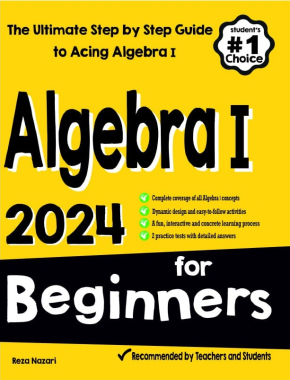
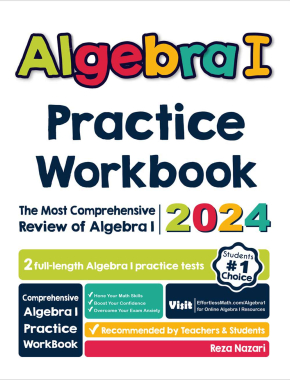

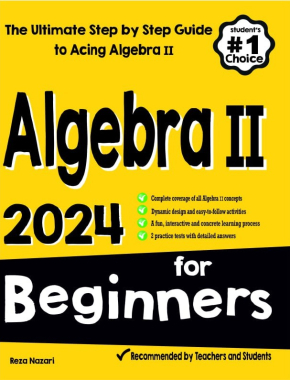
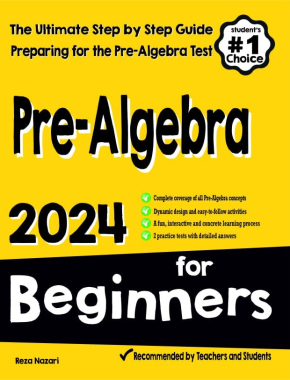






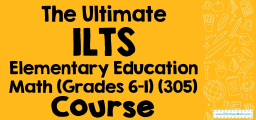

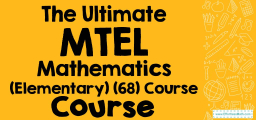

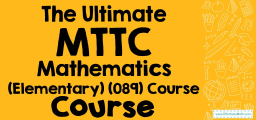
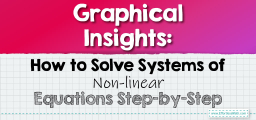
What people say about "Everything You Need to Know to Pass Algebra 1 - Effortless Math: We Help Students Learn to LOVE Mathematics"?
No one replied yet.